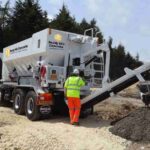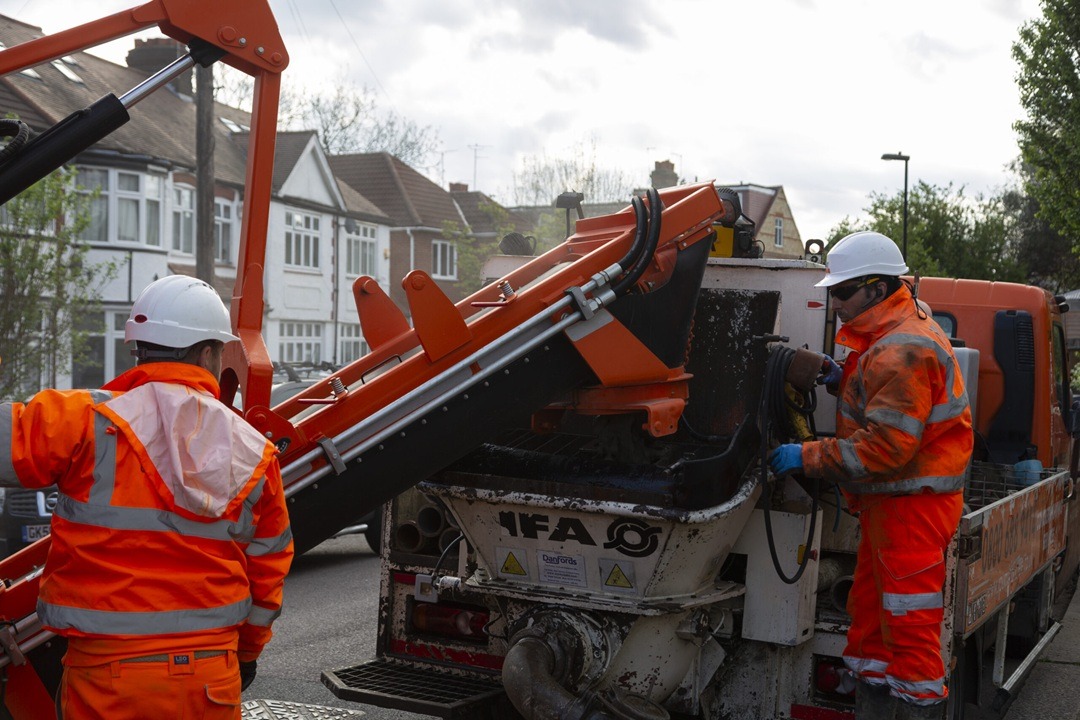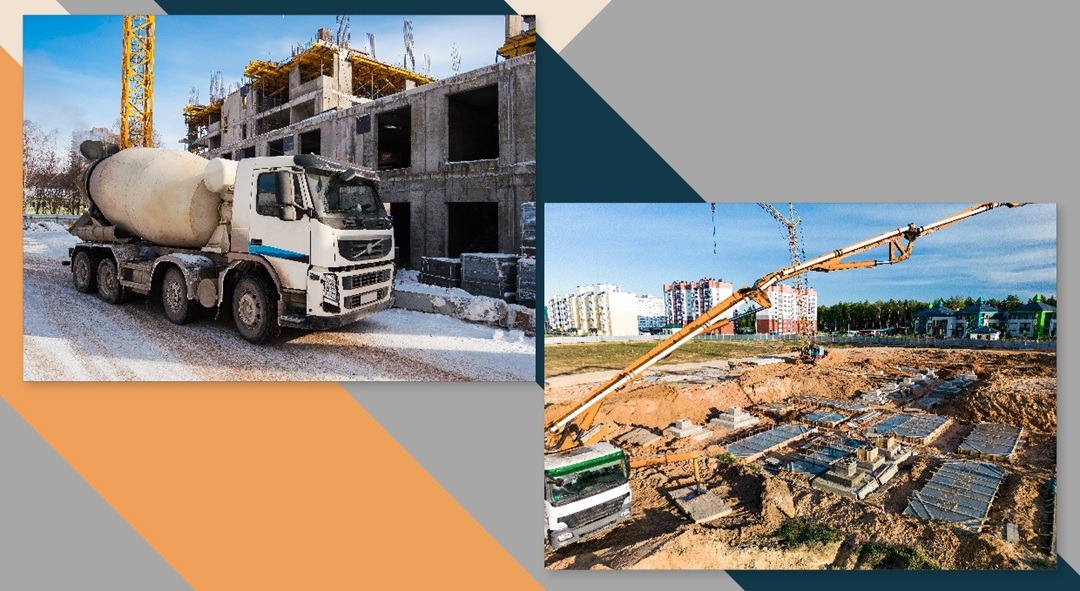[TL;DR]
“Winter concrete pouring in London demands specialised techniques to overcome cold weather challenges. Key strategies include maintaining temperatures above 5°C, using cold-weather mixes with accelerators, proper site preparation, and immediate post-pour protection with thermal blankets. Learn essential practices for successful cold-weather pours.”
London’s winter months don’t have to stop your concrete projects. Cold weather creates serious challenges for concrete pouring, but proper techniques ensure strong, durable results even in freezing conditions.
The key lies in understanding how temperature affects concrete curing. Below 5°C, concrete stops gaining strength entirely. Freezing temperatures can permanently damage fresh concrete, reducing its final strength by half.
Smart builders adapt their approach for cold weather. This means monitoring temperatures closely, choosing specialised mixes, and protecting concrete during its critical early curing period. Professional concrete delivery London services like Pro-Mix Concrete provide winter-ready solutions to keep your projects moving forward!
What are the Risks of Winter Concrete Pouring?
Cold temperatures slow chemical reactions that give concrete its strength. Freezing disrupts the hydration process permanently, compromising structural integrity.
Effects of Low Temperatures on Concrete
Temperature directly impacts concrete’s chemical curing process. Below 5°C, hydration slows dramatically, extending setting times by hours or days.
The hydration process generates heat, but cold weather removes this heat faster than concrete can produce it. This creates a downward spiral where curing becomes increasingly difficult.
Critical temperature effects:
- Hydration stops completely at 0°C
- Strength development reduces by 50% at 2°C
- Setting times double when temperatures drop below 10°C
- Chemical reactions become unpredictable in fluctuating temperatures
Common Winter Concrete Problems
Freezing damage occurs within the first 24 hours when concrete is most vulnerable. If concrete freezes within the first 24 hours after pouring, its 28-day strength can be reduced by up to 50%. Ice formation disrupts the cement matrix permanently.
Surface scaling appears as flaking concrete layers. This happens when water freezes near the surface, creating pressure that breaks the bond between cement paste and aggregate.
London’s freeze-thaw cycles create additional stress. Water expands when frozen, creating internal pressure that cracks concrete. Once damaged, concrete cannot recover its intended strength.
Long-term Durability Issue
Winter damage isn’t always immediately visible. Micro-cracks from freezing allow water penetration, leading to ongoing deterioration.
Permeability increases dramatically in freeze-damaged concrete. This allows water, salt, and chemicals to penetrate deeper, causing reinforcement corrosion and structural weakening over time.
Key Factors to Monitor Before Pouring
Success starts with careful monitoring before you begin. Two critical factors determine whether conditions are suitable for concrete pouring.
Weather and Temperature Thresholds
Never pour concrete when the air temperature is below 5°C or falling toward freezing. Temperature control is the most critical factor for successful winter concrete work.
Ideal pouring conditions maintain temperatures above 5°C for at least 48 hours. Check both current and forecasted temperatures. A sudden overnight freeze can destroy fresh concrete.
Monitor these temperature indicators:
- Air temperature at the pour site
- Ground temperature
- Concrete mix temperature
- Overnight low predictions
Ground and Sub-Base Conditions
Frozen ground prevents proper bonding and creates uneven settling. Never pour concrete on frozen substrates, as this leads to multiple structural problems.
Frozen substrates cause multiple problems. Ice melts during curing, creating voids. Thermal expansion differences crack the concrete. Proper preparation prevents these issues.
Check ground conditions by:
- Testing with a metal probe
- Looking for frost crystals
- Feeling for hard, frozen surfaces
- Measuring sub-base temperature
Essential Preparation Steps
Proper preparation makes the difference between success and failure. Start these steps 24-48 hours before your planned pour.
Site Preparation
Remove all snow, ice, and standing water before beginning work. Proper site preparation prevents bonding issues and ensures even concrete curing.
Start preparation 24-48 hours early. Use thermal blankets or ground heaters to thaw frozen areas. Warm formwork prevents rapid heat loss from fresh concrete.
Site preparation checklist:
- Clear snow and ice completely
- Remove standing water and slush
- Warm frozen ground with heaters
- Insulate formwork and reinforcement
- Protect mixing and placement equipment
London’s wet winter conditions require extra drainage attention. Ensure proper runoff prevents water accumulation during the pour.
Choosing the Right Concrete Mix
Cold-weather mixes contain accelerators and antifreeze admixtures that maintain workability at low temperatures. Standard concrete mixes fail in cold weather conditions.
Cold weather admixtures (CWA) dramatically improve concrete performance in freezing conditions. These specialised additives allow concrete to set normally even when poured at temperatures as low as -7°C, achieving setting times comparable to standard concrete poured at 21°C.
In contrast, standard concrete mixes fail in cold weather. Winter mixes use calcium chloride accelerators to speed setting. Antifreeze admixtures prevent freezing damage.
Professional concrete delivery London providers offer specialised winter mixes. These include:
- Type C (calcium chloride) accelerators
- Non-chloride accelerators for reinforced concrete
- Air-entraining agents for freeze-thaw resistance
- Reduced water-cement ratios for faster strength gain
Can’t choose the perfect mix for your project?
Pro-Mix Concrete offers specialised winter mixes formulated specifically for London’s climate conditions. Our technical team helps you select the right additives and mix designs to ensure your project succeeds regardless of temperature challenges.
Best Practices During the Pour
The actual pouring process requires careful timing and technique. These practices ensure optimal results during cold weather.
Timing the Pour
Start during the warmest part of the day, typically between 10 AM and 2 PM. Morning pours allow maximum daylight curing time before overnight temperature drops.
Morning pours allow maximum daylight curing time. Avoid late afternoon starts that face overnight temperature drops. Check weather forecasts for unexpected cold fronts.
Optimal timing strategy:
- Begin pours by 10 AM
- Complete placement before 3 PM
- Allow 4-6 hours of daylight curing
- Avoid pours before predicted freezes
Placement and Finishing
Keep concrete temperature above 10°C during mixing, transport, and placement. Work quickly but carefully to prevent heat loss and early setting.
Work quickly but carefully. Delays allow heat loss and early setting. Use heated water in mixes when possible. Insulate transport trucks in extreme cold.
Placement best practices:
- Maintain a mix temperature above 10°C
- Minimise transport time
- Place the concrete immediately upon arrival
- Use windbreaks to reduce heat loss
- Finish surfaces quickly to enable protection
Protecting Concrete After Pouring
Protection begins immediately after finishing. The first 72 hours determine your concrete’s long-term strength and durability.
Insulation and Curing
Cover immediately with insulating blankets or heated enclosures to maintain curing temperature above 5°C. Protection must begin within 30 minutes of finishing.
Protection must begin within 30 minutes of finishing. Insulation prevents heat loss. Heating provides additional warmth when needed.
Protection methods include:
- Thermal blankets with a minimum R-value of 1.0
- Heated enclosures for large pours
- Straw or foam insulation for smaller projects
- Curing compounds designed for cold weather
- Extended curing periods of 7-14 days
Monitor concrete temperature for the first 72 hours. Remove protection gradually to prevent thermal shock.
Monitoring and Adjustments
Check concrete and air temperatures every 2-4 hours for the first 48 hours. Temperature monitoring prevents surprises and allows for immediate adjustments when needed.
Temperature monitoring prevents surprises. Sudden weather changes require immediate adjustments. Document temperatures for quality control records.
Monitoring checklist:
- Concrete surface temperature
- Air temperature at the site
- Temperature under insulation
- Weather forecast updates
- Adjustment trigger points
4 Common Mistakes to Avoid
The most common errors include pouring on frozen ground, using standard mixes without additives, and inadequate protection after placement. These mistakes cause expensive failures and structural problems.
Critical Temperature Errors
Pouring when temperatures drop below 5°C ranks as the most dangerous mistake. Many builders ignore forecasts and proceed with pours before unexpected cold snaps.
Failing to check overnight temperature predictions causes numerous failures. A sudden freeze can destroy hours of work and require complete removal and replacement.
Site Preparation Failures
Inadequate ground preparation leads to bonding failures and uneven settling. Frozen substrates create thermal expansion differences that crack concrete permanently.
Leaving snow or ice on formwork causes rapid heat loss from fresh concrete. This creates temperature gradients that lead to internal stress and cracking.
Mix Selection Problems
Using summer concrete mixes in winter conditions guarantees problems. Standard mixes lack the accelerators and additives needed for cold-weather performance.
Incorrect water-cement ratios compound cold weather issues. Too much water increases bleeding and extends setting times when speed is critical.
Protection and Curing Mistakes
Removing protection too early exposes concrete to freeze damage. Many builders underestimate the extended curing time needed in cold weather.
Inadequate temperature monitoring leaves concrete vulnerable to unexpected weather changes. Regular monitoring prevents surprises that can destroy projects.
Tools and Products for Winter Concrete Pouring
Essential tools include thermal blankets, ground heaters, temperature monitoring devices, and cold-weather admixtures. Professional equipment ensures successful winter pours.
Credible concrete delivery London services provide specialised equipment. Quality tools ensure successful winter pours.
Recommended equipment:
- Thermal blankets (R-value 1.0 minimum)
- Propane or electric ground heaters
- Digital temperature monitoring systems
- Heated water tanks for mixing
- Wind barriers and temporary enclosures
- Cold-weather curing compounds
Local suppliers stock winter concrete products. Pro-Mix Concrete maintains an inventory of cold-weather additives and specialised mixes for London’s climate.
Bottom Line
Winter concrete pouring requires careful planning, proper materials, and continuous monitoring. Success depends on understanding temperature thresholds, preparing sites thoroughly, and protecting concrete during critical early curing periods. Following the best practices prevents costly failures and maintains structural integrity throughout London’s challenging winter conditions.
When winter construction demands can’t wait, Pro-Mix Concrete delivers reliable solutions. Our specialised winter mixes and expert technical support ensure your projects succeed regardless of weather conditions.
Contact our team today for cold-weather concrete solutions tailored to London’s unique climate challenges!
Frequently Asked Questions
Yes, but only with proper preparation and protection. Use cold-weather mixes, maintain temperatures above 5°C, and provide insulation during curing to prevent freezing damage.
The minimum safe temperature is 5°C for air temperature. Both air and ground temperatures must stay above freezing for at least 48 hours after pouring.
Freezing permanently damages concrete by disrupting the hydration process. Ice expansion creates internal cracks, reducing strength by up to 50% and increasing permeability significantly.
Cover immediately with thermal blankets, use heated enclosures, apply cold-weather curing compounds, and monitor temperatures continuously for 72 hours minimum to maintain proper curing conditions.
Never pour on frozen ground or snow. Frozen substrates prevent proper bonding and create uneven settling. Thaw and warm the ground before pouring concrete.
Yes, winter mixes contain accelerators like calcium chloride, antifreeze admixtures, air-entraining agents, and reduced water-cement ratios to improve cold-weather performance and prevent freezing damage.
- Dennis Broderick
- Dennis Broderick is the founder and owner of Pro-Mix Concrete Company, a trusted name in ready-mix concrete solutions across the UK. With over 20 years of hands-on experience in the construction and concrete industry, Dennis brings unmatched expertise, practical insights, and a commitment to quality on every project - from residential driveways to large-scale commercial developments.
BlogNovember 15, 2025What is the Mix Proportion of Concrete?
BlogOctober 30, 2025Same-Day and Next-Day Delivery Options from London Concrete Suppliers
BlogOctober 28, 2025Line Pump Hire vs. Boom Pump Hire Prices in London
BlogOctober 25, 2025How Quickly Concrete Must Be Used Once Delivered In London Traffic









